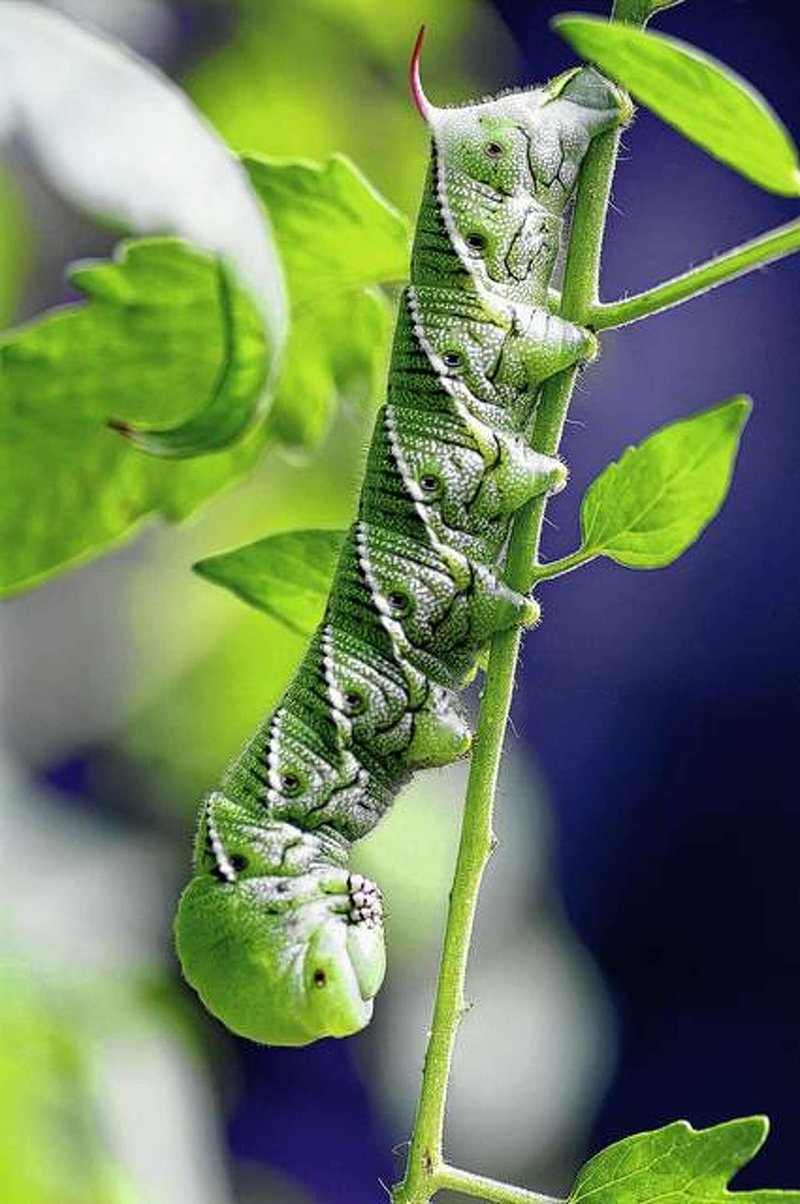
Hornworms, particularly the tomato hornworm, are notorious in the gardening world. They can cause severe damage to crops if left unchecked, leading to financial losses for farmers. In this article, we’ll take a closer look at how these tiny monsters affect the economy of market gardens, the methods to control their populations, and what all this means for growers struggling to make a living. So, grab your coffee, and let’s dive in!
What Are Hornworms and Why Are They a Problem?
Hornworms are the larval stage of certain moth species, most notably the five-spotted hawk moth. They often blend into their surroundings, making them hard to spot. These caterpillars primarily feed on tomato plants, but they also target peppers, eggplants, and tobacco. *Here’s the thing:* when their numbers swell, they can decimate crops in just a few days.
The economic impact of hornworms goes beyond just the immediate loss of crops. When farmers lose a significant portion of their harvest, it doesn’t just hurt their current income. It can have a ripple effect through the entire market. For instance, a farmer might have to raise their prices if they face a harvest failure, which could lead to a loss of customers. Additionally, the increased cost of pest control measures can eat into profits, leaving farmers financially vulnerable.
One might wonder how serious the problem can get. Let’s put it into perspective: a single hornworm can eat an entire tomato plant in just a week. Imagine a market garden with hundreds of tomato plants—just a small infestation could lead to thousands of dollars in losses. It’s crucial for farmers to stay vigilant.
Signs of Hornworm Infestation
Detecting hornworms early can save market gardeners from significant losses. So, what should you be on the lookout for? *Honestly*, the signs are pretty straightforward.
– **Chewed Leaves**: One of the first signs of infestation is leaves with noticeable holes or be missing entirely. If you see this, it’s time to investigate further.
– **Frass**: This is a fancy term for caterpillar poop. If you find dark green or black droppings on the ground around your plants, it’s a telltale sign that hornworms are nearby.
– **Presence of Hornworms**: The most obvious sign is spotting the hornworms themselves. They’re green and can grow up to 4 inches long, making them quite a sight if you know where to look. *Pro tip*: check the undersides of leaves for these sneaky pests.
Being proactive can make a world of difference. Farmers who take the time to check their crops regularly are much more likely to catch hornworm infestations early. This can significantly curb the economic impact on their market gardens.
How Hornworms Affect Crop Yields
The relationship between hornworms and crop yields is a critical one. You might be wondering, “How does one little worm affect my entire crop?” Well, when hornworms feed on plants, they can stunt growth, reduce fruit production, and even cause plants to die.
Let’s break it down further. Here’s what happens to market gardeners struggling with hornworm infestations:
– **Reduced Quantity**: Fewer plants mean fewer tomatoes or peppers to sell. If a farmer loses 50% of their crop to hornworms, they’re losing half their income for that season.
– **Quality Impact**: Plants under stress from hornworm feeding may produce smaller or lower-quality fruits. For market gardens, reputation matters. If customers receive subpar produce, they may not return.
– **Increased Labor Costs**: To combat hornworms, farmers may spend more time in the field manually removing them or applying pesticides, which adds up to labor costs that can strain their budgets.
The bottom line? Hornworms can turn a thriving market garden into a struggling one—with a substantial economic toll to match.
Control Methods for Hornworm Infestations
So, how can market gardeners protect their precious crops from the wrath of hornworms? There are several control methods available, each with its pros and cons. Let me explain a few of the most common ones.
- Handpicking: This is the simplest method. Farmers can go through their plants and manually remove hornworms. While it’s effective, it can be time-consuming, especially in larger gardens.
- Beneficial Insects: Introducing natural predators like parasitic wasps or ladybugs can help keep hornworm populations in check. This method is eco-friendly, but it requires careful planning to ensure the beneficial insects thrive.
- Insecticides: Chemical treatments can be effective but come with their own set of challenges. They can kill beneficial insects too and raise concerns about chemical residues. It’s essential to follow guidelines for safe application.
- Crop Rotation: Changing the location of plantings each season can disrupt the lifecycle of hornworms. This method requires more planning but can pay off in the long run.
By combining these methods, farmers can create a comprehensive pest management plan. It’s about being one step ahead of these pesky hornworms.
Economic Strategies for Farmers
The battle against hornworms isn’t just about pest control; it’s also about financial strategies. Here’s where market gardeners can get clever with their approach.
1. **Diversification**: When farmers grow a variety of crops, they can better absorb losses from pests. If hornworms hit the tomatoes hard, but the peppers are safe, then it’s easier to maintain income.
2. **Insurance**: Crop insurance can be a lifesaver. When farmers face significant losses due to pests, insurance can help recoup some of those costs and stabilize their finances.
3. **Community Support**: Joining local farming cooperatives can be beneficial. Sharing resources and knowledge often leads to lower costs and better pest management techniques.
4. **Education and Training**: Staying updated on pest management practices through workshops or local agricultural extensions can empower farmers to make informed decisions.
By implementing these economic strategies, farmers can protect themselves from the unpredictable nature of hornworms and position their gardens for success.
The Future of Market Gardens and Hornworms
Looking ahead, the challenges posed by hornworms are likely to persist. Climate change is altering pest habits and migration patterns, potentially intensifying infestations. But there’s hope. As agricultural technology advances, new methods are emerging to help combat these pests more effectively.
Farmers are increasingly turning to integrated pest management approaches that combine chemical, biological, and cultural practices. This helps maintain healthy ecosystems while also protecting crops. Research is also focusing on breeding more resilient plant varieties that can withstand hornworm damage.
Ultimately, collaboration within the agricultural community will be vital to tackle these challenges head-on. Farmers exchanging ideas, solutions, and resources can lead to more sustainable practices that benefit everyone involved—consumers included.
In conclusion, hornworms may seem small, but their impact can be quite large in the world of market gardening. By understanding their effects and employing effective control methods, market gardeners can work toward minimizing their economic struggles. Staying informed and adaptable is key to thriving in this ever-changing landscape.

